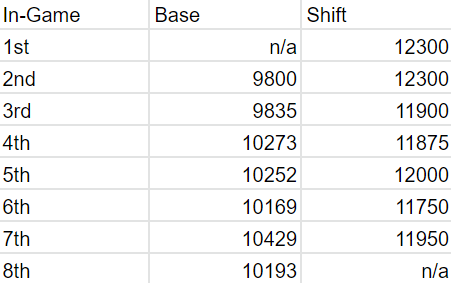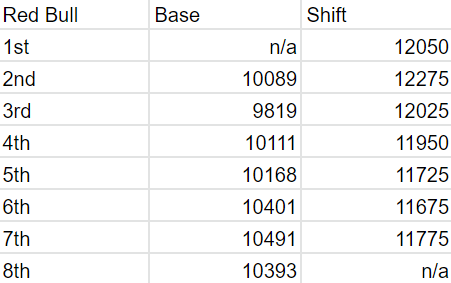@taattor yep, pretty much you just have to be mindful of what rev range you're putting your engine into when you downshift. If you're losing the car while braking, be gentler with the downshifting so that the lower gear is engaged in a less powerful rev range, reducing engine braking and keeping the tyres in their working range grip wise.
For anyone trying to wrap your head around it:
Engine braking is the exact same process as putting power down, but reversed. So when you downshift and hit low gears in a high RPM range, just as the acceleration would be too strong if you were on the throttle the braking (deceleration) done by the engine is too strong and may be way more than what your driven wheels can handle at that moment - hence the rear stepping out and you losing it.
This makes sense when you really entertain the idea of your powertrain (engine + transmission + wheels + all the shafts and axles linking them all together) as one closed system. Engine speed (RPM) and power output are linked to whatever is happening to the wheels and vice versa, unless that link is briefly interrupted by engaging the clutch.
The higher the RPM, the higher the energy being input in that system by the engine, regardless of the gear you're in. That's why dyno charts with power + torque curves vs RPM do not specify the gearing; it's all the same.
How much of the engine power output at a given RPM will be used to turn the wheels harder (torque) or turn it faster depends on the gear ratio engaged in your transmission. You know all that basic stuff: 1st gear makes your wheels turn really hard but not very fast, so only useful to launching the car or to accelerate from very slow speeds, while 8th gears will enable you to reach top speed but good luck trying to make the car move from a standstill with it engaged. But then again, the engine power being injected in the system at say 10000RPM will be the same, no matter if you're on 1st or 8th gear.
What gives, when you stop feeding gas to the engine the whole system gets inverted! Now it's not the engine driving the wheels, but the engine sapping the wheels energy. The wheels would be content to keep on spinning at their original rate (inertia) but now not only they're not receiving power anymore, they have the engine cylinders coming to a stop.
Now when you downshift from say 4th @10000RPM and disengages the clutch, the driven axle is suddenly linked to an engine running at @12000RPM in 3rd gear which a significantly higher gear ratio - as it is a closed system, the wheel speed and the engine speed will match and keep up with one another. The engine braking works at basically the same rate as if it was inputting power into the wheel.
So it will slow down your wheels even more the more you downshift. Braking is the same as acceleration anyway, just the direction of the force that is inverted, so it makes sense that the lower the gear the stronger the effect, thanks to the transmission. Get to 150kph in a high gear, lift and check how long it will take to reach e.g. 40kph, then do the same thing in 2nd or 1st gear - you slow down much faster!
The extra rotation you get comes from the engine draining power from the driven axle and slowing you down. If it so happens that you lose the rear, it's just that the mechanical braking force + the suddenly higher engine braking force exceeds the grip between tyres and tarmac and the rear wheels start to slide.


